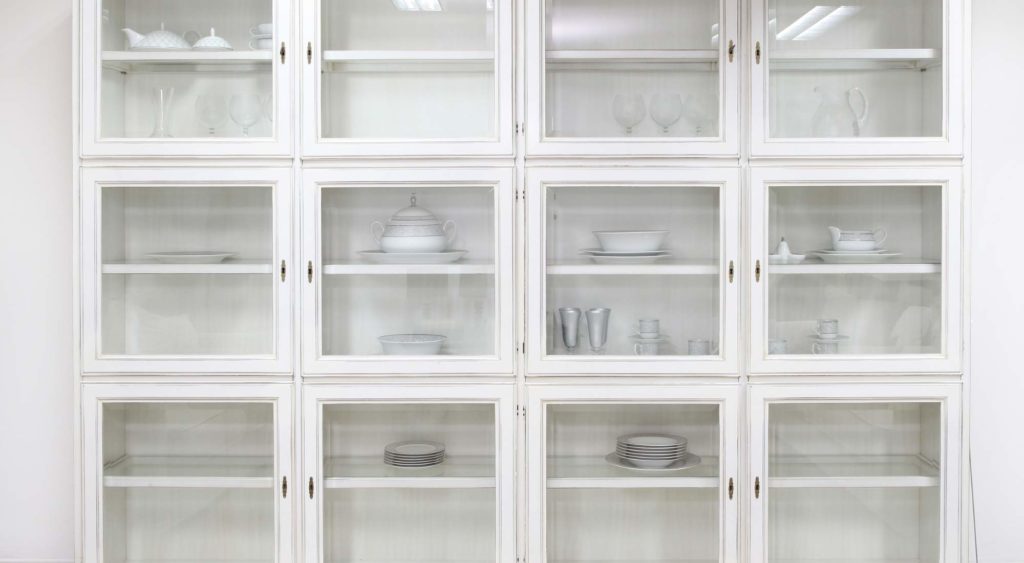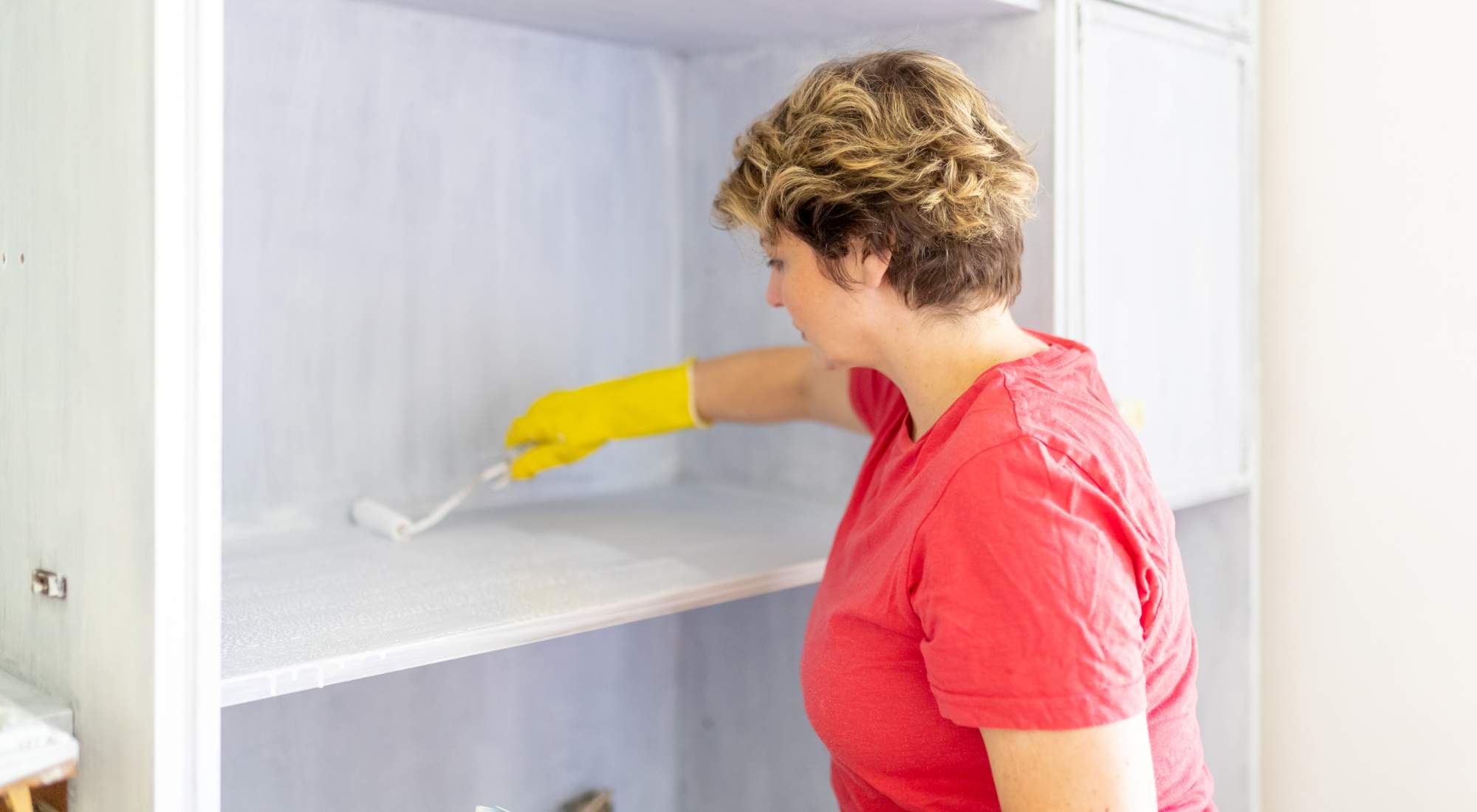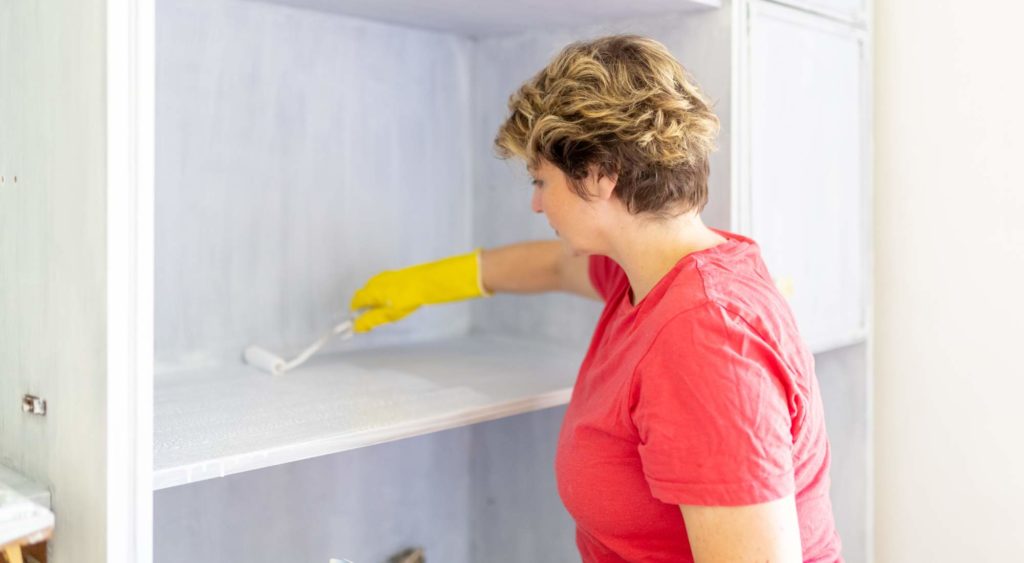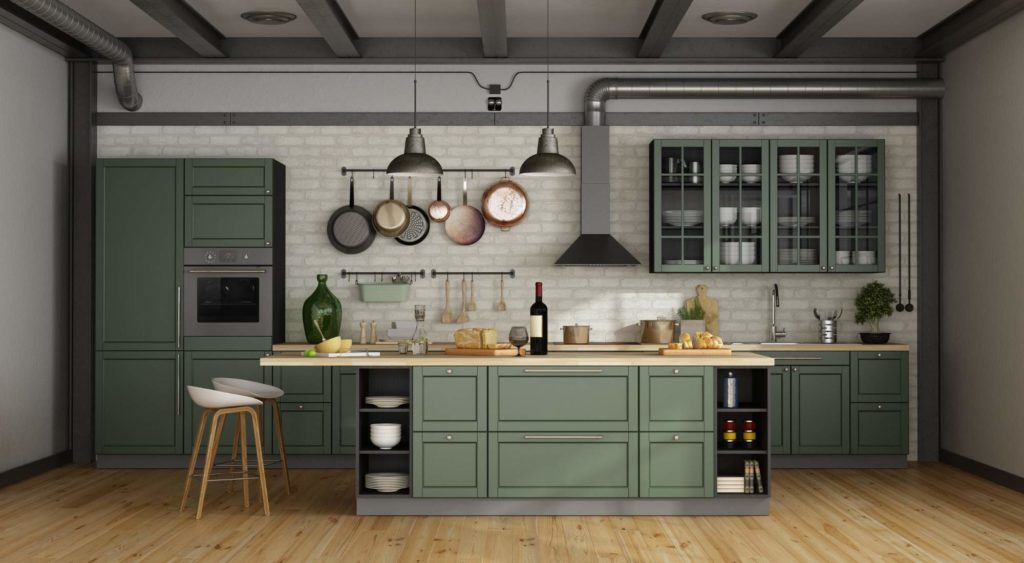You’re tired of staring at your cabinets. You know they need updating, and you’re ready to get rolling. But you’re wondering, “Should I paint the inside of the cabinets as well as the outside?”
It’s one of those questions people sometimes don’t ask themselves until they’re in the thick of renovation. After all, the inside is only briefly visible. Is it really necessary to paint it?
What do most people do? What do professionals recommend?
No need to stress. The answers are easier than you might realize.
We are here to help you answer these questions, so you can proceed with your renovation with confidence. Learn how to make the best choice about how much of your cabinets to paint.

Table of Contents
- Do Professionals Paint the Inside of Cabinets?
- Do You Paint the Inside of Cabinets the Same Color?
- Should I Paint the Inside of My Cabinet Drawers?
- 7 Steps To Painting the Inside of Cabinets
- Two Brothers Painting Will Take Care of Your Cabinets and So Much More
Do Professionals Paint the Inside of Cabinets?
Yes, professionals will paint the inside of your cabinets — if you are okay with waiting longer and spending more for labor and materials.
Should I Paint Inside of Cabinets?
Painting the inside of cabinets is usually not recommended for a couple of reasons:
- One problem is called blocking. Blocking occurs when plates, glasses, or any other dishes adhere to the surface of your painted cabinets. When you remove these items, the paint will come off where they have adhered to the surface.
Blocking resistance is the paint’s ability to avoid the adhesion of items placed on it even after it has dried.
There are a few things that can be done to increase block resistance:
- Don’t apply too many layers of primer and paint.
- Keep good airflow in the space.
- Wait until your cabinets have fully cured before restocking them.
- Use high-quality paint products.
- Besides blocking, another undesirable effect of painting the inside of your cabinets is that if you used a hard paint, sliding things in and out of the cabinets may create marks and scratches.
People who live in older homes often have the insides of their cabinets painted because the cabinet insides were previously painted. To keep the colors from clashing, they choose to have the inside and outside of the cabinets painted in the new color.
Two Brothers Painting typically marks just inside of the face frame lip and paints that part — leaving the inside natural. There is no question of having to finish new cabinets, though. They come prefinished with a factory clear coat that requires no further finishing.
Two Scenarios When We Would Recommend Painting Inside of Cabinets
#1: If You Have an Open Cabinet or Glass-Front Doors
If you have an open cabinet or glass-front doors, you may want to have the inside painted, depending on the desired effect. Even with cabinets of this type, some people choose to leave the inside natural for aesthetic purposes.
There are a few design approaches to cabinet painting:
- Paint the inside the same color as the outside for a tidy, uniform look. This is usually the most attractive for cabinets with glass doors, especially if the inside is illuminated.
- Paint the inside a complementary, softer color that accents the exterior.
- Paint the inside with a bold color that sharply contrasts with the exterior.
#2: If the Inside of the Cabinet Is Already Painted and Needs To Be Refreshed
You may want to paint the interior of your cabinets if:
- You live in an older home and the cabinets were previously painted.
- You envision a new color scheme for your cabinets and want the interior to match the exterior.
Do You Paint the Inside of Cabinets the Same Color?
Generally speaking, yes. If the inside of your cabinets is visible, it’s usually recommended that you paint them the same color inside and out.
If you’re creating a certain decor or design, however, you might prefer complementary colors. You might also choose a different color for cabinets that are closed off and whose aesthetic appeal really doesn’t matter.
Should I Paint the Inside of My Cabinet Drawers?
There is little reason to paint the inside of your cabinet drawers. Drawers are normally lined with contact paper or contain utensil organizers. Even if they were visible, any paint on them would typically be covered.
Since painting inside drawers isn’t necessary, it is an unnecessary expense.
7 Steps To Painting the Inside of Cabinets
If you prefer to do the project yourself rather than call a professional like Two Brothers Painting, here are some suggestions for how to do it right. Keep in mind that painting the inside of cabinets can take twice as long as painting the outside. There are more awkward angles that you’ll need to reach and there is less space to work in.
#1: Choose the Right Paint and Primer
Your primer should be tinted to the color of the top coat so that dark or stained surfaces do not show through. It should also be suited to the wood, metal, or laminate surface of the cabinets. Check with an expert at your local paint store to choose the right kind and tint of primer.
Keep in mind that in most older homes, cabinets were painted with oil-based paint. Today, the most common paint is latex. If you try to put latex-based paint on top of oil-based paint, the paint can peel and a re-painting will be necessary much sooner. An oil-based primer followed by the latex will keep this from happening.
As for the paint, there are two types to choose from:
- Acrylic enamel paint – Water-based paint with low fumes that cleans up easily with water.
- Alkyd paint – Oil-based paint containing solvents that can irritate your lungs and require mineral spirits to clean up. Oil-based paints give a hard, durable finish.
#2: Remove Your Cabinet Doors and Hardware
When removing your cabinet doors and hardware, follow these steps:
- Place a drop cloth over your floors and countertops to protect the workspace.
- Use a screwdriver or drill to remove the door hinges. Do not try to paint over these, as this affects the function of the door.
- Make a key or use tape to label where to put the doors and drawers when it’s time to reassemble.
- Place the drawers and doors away from your workspace to be sure you don’t drip paint on them. If you are painting them too, it is best to do so away from the workspace and to let them thoroughly dry before putting them back on.
#3: Thoroughly Clean and Prep the Area
Thorough cleaning and prepping the area is critical to a good paint job:
- First, remove all items from the cabinets.
- Clean the inside of the cabinets with warm soapy water and damp rags to remove dirt, grease, and mildewed spots. Use a degreaser if needed. Two Brothers Painting recommends Trisodium Phosphate (TSP) as one of the best products for degreasing cabinets and appliances.
- Let the cabinets dry.
- If the cabinets were painted or finished with a high-sheen product, you’ll need to sand them enough to dull the existing coating so the new paint will adhere. Use medium-grit sandpaper.
- When you’re finished sanding, vacuum any sanding debris and wipe the inside of the cabinets with a damp rag or microfiber cloth.
#4: Prime Inside the Cabinets
Priming ensures that the paint adheres well to the surface and acts as a sealer for porous surfaces that would otherwise absorb too much paint. If you do not prime first, your paint will have a hard time sticking to the surface and will likely not appear even.
When priming the inside of your cabinets:
- Lay down a drop cloth to catch paint drips and cover the backsplash and walls before you begin priming.
- Using a mini foam roller, apply an even coat of your primer of choice. Depending on the kind of primer you are using, you may need to apply two coats. Avoid priming too much, or you may have problems with adhesion when you get to painting. You will still need a brush for corners, but the foam roller helps reduce brush strokes and ensures a smooth finish.
- Let it dry thoroughly. If there are any obvious brush marks, lightly sand them down.
#5: Paint Inside the Cabinets
Paint the inside of the cabinets with two coats, allowing time in between for the first coat to completely dry (up to 16 hours).
You can use either a paint sprayer or a roller. Keep in mind that sprayers are most safely used outdoors or in a garage and must be operated responsibly. If you use a roller, you will also need a brush for hard-to-reach areas.
#6: Let the Inside of Your Cabinets Cure
Curing time is the time it takes for paint to fully harden. For some kinds of paint, this can take 3-5 days. If you do not wait enough time before restocking your cabinets, the paint can be damaged — as blocking (discussed above) can occur more easily.
#7: Skip Steps 1-6 and Let the Pros Handle Everything for You
Painting cabinets can be a real hassle. And if it is not done correctly, it can look unprofessional and can be easier to damage.
It can be less stressful to hire a company like Two Brothers Painting to do it instead. The job will probably get done faster than if you do it yourself, and you won’t run the risk of paint chipping and getting into the food items stored in your cabinets.
Two Brothers Painting Will Take Care of Your Cabinets and So Much More
Whether or not you choose to paint the inside of your cabinets, Two Brothers Painting can serve your home renovation needs. If you do want your cabinet interiors painted, we can save you a lot of time, labor, and any uncertainty you might experience if you were to undertake the project on your own.
Our clients can testify to our professional service and demonstrable expertise. We strive for happy clients!
Contact Two Brothers Painting today to schedule an appointment with one of our professionals who will estimate the cost and advise you concerning any matters affecting the outcome of your painting project.




